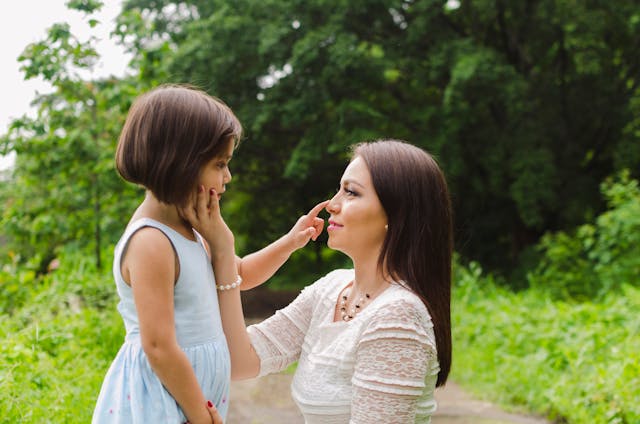The Power of Active Listening in Family Relationships
Effective communication is the foundation of strong family relationships, and active listening plays a crucial role in fostering understanding and connection. When family members truly listen to one another, they create an environment of respect, empathy, and trust. Let’s explore the benefits of active listening, how it strengthens family bonds, and practical tips for cultivating this essential skill.

What is Active Listening?
Active listening is more than just hearing words; it’s about fully engaging with the speaker to understand their feelings, thoughts, and needs. This involves maintaining eye contact, providing verbal and non-verbal cues, and responding thoughtfully. Unlike passive listening, which is often distracted or superficial, active listening ensures the speaker feels valued and heard.
Benefits of Active Listening in Family Dynamics
Building Trust and Understanding
When family members listen attentively, it shows that they care and value each other’s perspectives. This fosters trust, which is essential for resolving conflicts and navigating challenges together.
Strengthening Emotional Bonds
Listening with empathy allows family members to share their emotions freely. This openness deepens emotional connections, creating a safe space for vulnerability and mutual support.
Improved Problem-Solving
Active listening helps clarify issues by ensuring everyone’s concerns are understood. When all voices are heard, solutions are more likely to address everyone’s needs, leading to stronger and more collaborative decision-making.
Reducing Misunderstandings
Miscommunication is a common source of conflict in families. By actively listening, misunderstandings can be minimized, as family members are better able to interpret each other’s intentions and meanings.
How to Practice Active Listening
Be Fully Present
-
Put away distractions, such as phones or TV, and focus entirely on the speaker.
-
Use open body language, like facing the person and nodding occasionally, to show engagement.
Reflect and Paraphrase
-
Repeat or summarize what the speaker has said to ensure clarity and demonstrate understanding. For example, “So you’re feeling frustrated because…”
-
Avoid interrupting or jumping to conclusions before they’ve finished speaking.
Ask Open-Ended Questions
-
Encourage deeper conversations by asking questions that invite elaboration, such as, “Can you tell me more about that?”
-
Avoid yes/no questions that limit dialogue and exploration of feelings.
Validate Feelings
-
Acknowledge the speaker’s emotions without judgment. For example, “That sounds really tough,” or “I can see why you’d feel that way.”
-
Avoid dismissing their feelings, even if you don’t fully agree with their perspective.
Respond Thoughtfully
-
Pause before replying to ensure your response is considerate and addresses the speaker’s needs.
-
Use “I” statements to express your thoughts without sounding accusatory, like “I feel worried when…”
Active Listening with Children
Children, especially, thrive when they feel heard. Active listening with kids can:
-
Boost their self-esteem by showing that their opinions and feelings matter.
-
Encourage them to open up about challenges they face at school or with friends.
-
Model healthy communication skills they can carry into adulthood.
Overcoming Common Barriers to Active Listening
Time Constraints
Busy schedules can make it challenging to dedicate attention to family conversations. Set aside specific times, such as during dinner or before bed, to connect without interruptions.

Emotional Reactions
It’s easy to react defensively when disagreements arise. Practice mindfulness to manage emotions and stay focused on understanding rather than responding impulsively.
Cultural or Generational Differences
Diverse family backgrounds can lead to differing communication styles. Approach these differences with curiosity and an open mind, seeking to learn rather than judge.
The Ripple Effect of Active Listening
When families practice active listening, the benefits extend beyond the home. Children learn to communicate effectively and empathetically in their friendships, while adults improve their relationships at work and in the community. A family that listens to each other sets a positive example for creating harmony in all aspects of life.
Conclusion: Building Stronger Family Relationships
Active listening is a simple yet powerful tool that can transform family relationships. By making an effort to truly hear and understand each other, families can build trust, resolve conflicts more effectively, and deepen their emotional bonds. Start small by incorporating active listening into your daily interactions, and watch as your family grows closer and more connected.












